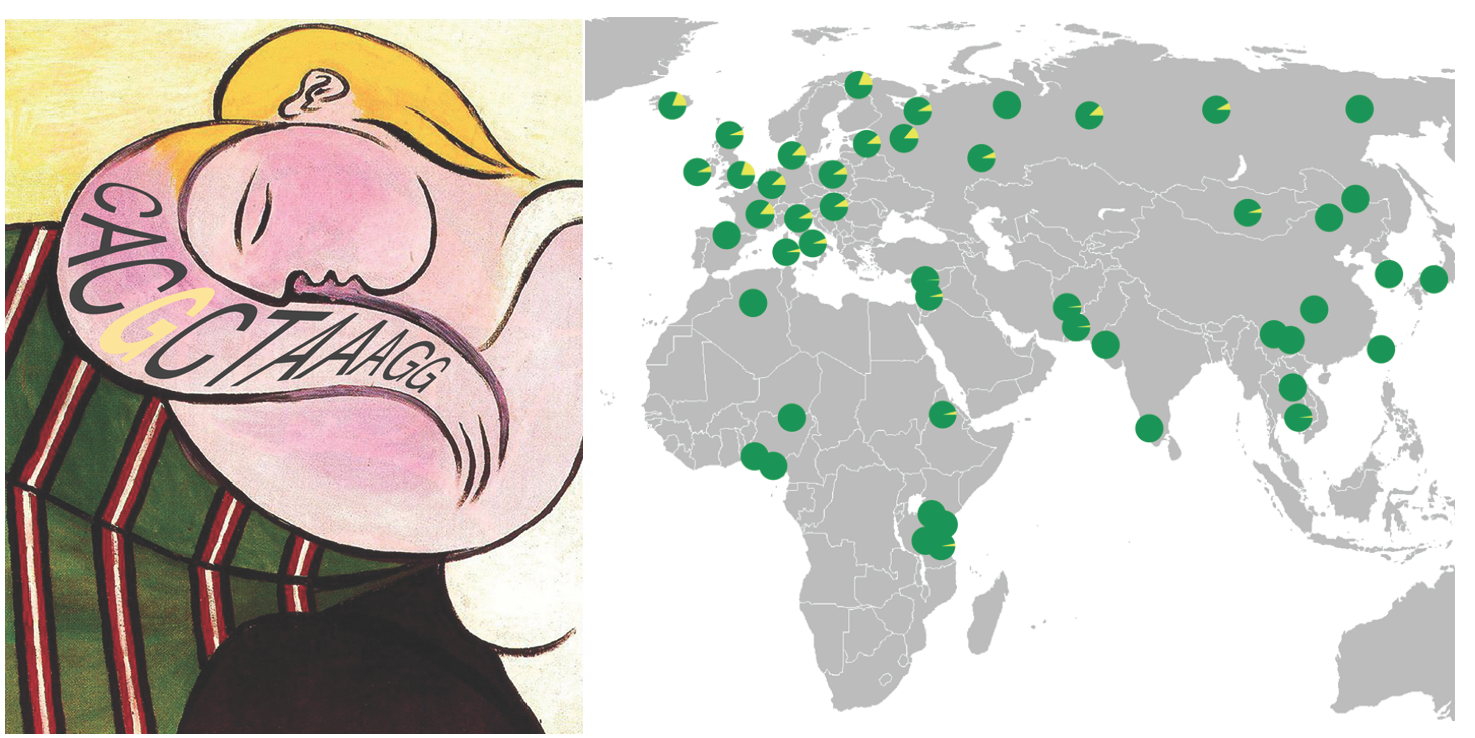|
Mice are the preeminent model system for mammalian genetics, combining
relatively short generation times, ready availability of many inbred and
mutant lines, and sophisticated methods for making precise knockouts and
gene substitutions. Mice are also often the best system available for asking
detailed mechanistic questions in mammals, or testing the phenotypic effects
of particular sequence changes seen in mice or other species. We have used
classical genetics in mice to identify fundamental pathways that control the
formation and patterning of cartilage, bone, and joints
(Kingsley 1992; Storm 1994; Storm and Kingsley 1996; Ho et al. 2000).
We also make extensive use of mice for identifying the regulatory mechanisms
that lay out expression of key developmental control genes, with the ultimate
aim of identifying how vertebrate morphology itself is encoded in the genome
(DiLeone et al. 1998,
2000;
Mortlock et al. 2003;
Menke et al. 2008;
Guenther et al. 2008;
McLean et al. 2011;
Guenther et al. 2014;
Guenther et al. 2015;
Chen et al. 2016;
Indjeian et al. 2016).
Our positional cloning of the classic mouse short ear and brachypodism
genes provided the first genetic evidence that bone morphogenetic proteins
(BMPs) play an essential role in formation of both bone and joints, as well
as in the repair of bone fractures in adult animals
(Kingsley et al. 1992; Storm et al. 1994, 1996).
BMPs have the remarkable ability to stimulate the entire process of cartilage
and bone formation when expressed at new sites in mammals. Since BMPs are the
key signals used by vertebrates to initiate skeletal formation in vivo, much
of the pattern of the skeleton may be encoded by the regulatory sequences that
lay out the expression of BMPs in specific patterns during embryonic development
(Kingsley 1994).
We have used genetics, genomics, and comparative sequencing to identify a
remarkable array of long distance, modular regulatory elements surrounding the
Bmp5, Gdf5, and Gdf6 genes (DiLeone et al. 1998,
2000;
Mortlock et al. 2003;
Rountree et al. 2004;
Portnoy et al. 2005;
Guenther et al. 2008;
Guenther et al. 2015;
Chen et al. 2016;
Indjeian et al. 2016;
Capellini et al. 2017).
These sequences correspond to individual "anatomy" elements that
help control the size, shape, and number of individual bones and joints.
Further study of these anatomy regulatory elements will provide a much more
detailed picture of the molecular mechanisms that control the formation and
patterning of the vertebrate skeleton (Guenther et al. 2008; Chen et al. 2016).
The control sequences are also providing important new tools for manipulating
the expression of other genes in developing skeletal structures. For example,
regulatory elements from the Gdf5 gene can be used to inactivate other genes
specifically in joints, making it possible to identify genes and signals
required for maintenance or repair of articular cartilage (Rountree et al. 2004; Gurley et al. 2006; Koyama et al. 2007; Kahn et al. 2009; Dy et al. 2010).
Finally, BMP genes are known to be reexpressed at sites of injuries in
adulthood, and are also required for normal fracture repair and healing
(Kingsley 1994).
We have recently identified a novel regulatory region in the Bmp5 gene that
controls expression specifically at injury sites in adult animals
(Guenther et al. 2015;
Heller et al. 2021).
Interestingly, this "Injury Response Element" is distinct from the various
control regions that lay out the stereotyped patterns of BMP expression during
embryonic development. Further study of the adult injury response element may
reveal novel mechanisms that organisms use to repair tissues following
unpredictable bone fractures and other injuries, and may ultimately suggest
new strategies for manipulating BMP expression to achieve useful clinical outcomes
(Guenther et al. 2015;
Heller et al. 2021).
Many other genes in vertebrates are controlled by the same kind of complex,
long distance regulatory apparatus we have worked out in detail for BMP genes.
We are currently using a set of methods worked out in our BMP studies (BAC
scanning, comparative sequence analysis, transgenic enhancer assays, and
targeted modification of regulatory sequences) to identify the regulatory
apparatus controlling expression of several other key developmental control
genes. These studies are identifying how vertebrates control separate growth of
forelimb and hindlimb structures (Menke et al. 2008;
Chan et al. 2010),
and how major changes in human skin and hair color can arise through tissue
specific regulatory changes in other important signaling genes, including the
key stem cell factor/KITLG gene that controls many different lineages in
mammals (Miller et al. 2007; Guenther et al. 2014).
We have also begun new projects searching for the molecular basis of
human-specific traits, with mice providing a powerful system for rigorously
testing the expression patterns and phenotypic consequences of interesting
DNA changes that are unique to the human lineage (McLean et al. 2011;
Indjeian et al. 2016;
Capellini et al. 2017;
Song et al. 2021).
More information on research projects in sticklebacks, human evolution, and human diseases.
|






